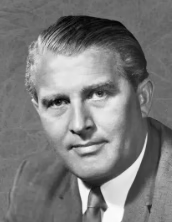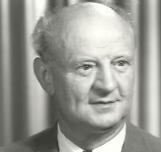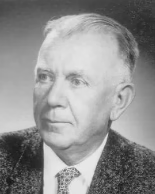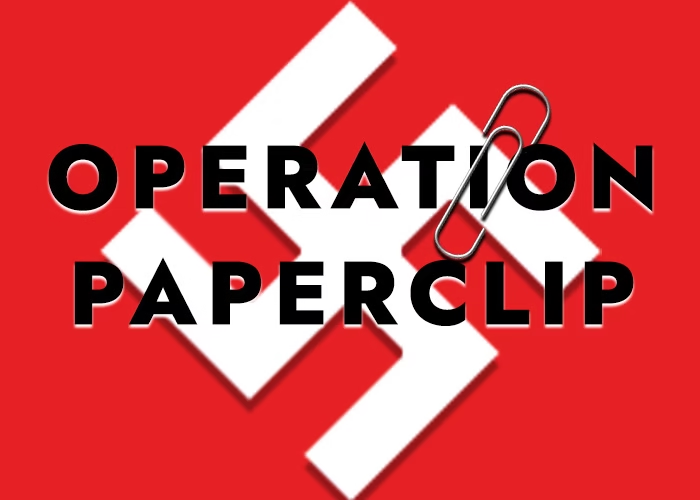After World War II, the U.S. government launched Operation Paperclip, a secret program that brought over 1,600 German scientists, engineers, and technicians—many of whom were former Nazis involved in war crimes—to work on American military and space programs. The operation was deliberately hidden from the public to prevent outrage and to secure a technological advantage over the Soviet Union during the Cold War. This decision raised serious ethical concerns, as the U.S. knowingly gave war criminals a new life instead of punishing them.
What Was Operation Paperclip?

Between 1945 and 1959, the U.S. secretly recruited Nazi scientists, many of whom had committed atrocities during the war. These individuals were placed in high-ranking positions within NASA, the U.S. military, and defense industries, contributing to America’s space race and weapons development. One of the most famous recruits was Wernher von Braun, who had helped build the deadly V-2 rockets used against civilians during the war.
The Origins of the Program
As World War II came to an end, the U.S. military realized that Germany’s scientists and engineers held advanced technological knowledge that could be beneficial in the coming Cold War. Nazi Germany had developed groundbreaking missile technology, aviation advancements, and biological weapons research. Many of these developments were far ahead of what the Allies had at the time.
In response, U.S. intelligence agencies launched Operation Overcast in 1945, a program designed to locate and extract German scientists before they could be captured by the Soviet Union. This later evolved into Operation Paperclip, with a much broader mission to fully integrate Nazi scientists into American scientific and military institutions.
The Dark Side of Operation Paperclip
1. Shielding War Criminals
Many of the scientists recruited under Operation Paperclip were active Nazis who had committed horrific crimes. Some had conducted experiments on concentration camp prisoners, while others designed weapons that killed thousands. Rather than being held accountable, these individuals were welcomed into the U.S. with new identities and jobs.
2. Forging Documents to Cover Up Their Pasts
To make these scientists “acceptable” to the public, the U.S. government altered records and removed Nazi affiliations from their files. These were men who had once worked directly under Adolf Hitler and Heinrich Himmler, and yet, they were whitewashed into heroes in America’s technological race.
3. American Hypocrisy
The U.S. had just fought a war against Nazi Germany and denounced their crimes. Yet, instead of ensuring justice, the government gave many of these same Nazis a free pass in exchange for their knowledge. The same scientists who had built weapons for mass murder were now working to advance American military power.
4. Cruel Human Experimentation
Several of the recruited scientists had conducted horrifying medical experiments on human beings, particularly in concentration camps like Dachau and Auschwitz. Dr. Hubertus Strughold, for example, played a role in inhumane experiments on prisoners, but later became a key figure in aerospace medicine in the U.S.
5. Helping Build the U.S. War Machine
Many of these former Nazis helped develop missiles, biological warfare, and advanced weaponry for the U.S. Some of their knowledge even contributed to Cold War nuclear arms development, making the world a more dangerous place.
Why Was It Hidden?
The U.S. government knew the public would be outraged if they found out that known Nazis were being given new lives in America. So they kept the operation secret, destroying and altering documents to avoid backlash. But the real reason behind Operation Paperclip was clear:
- To beat the Soviet Union in military and space technology.
- To develop advanced weapons and rockets using Nazi expertise.
- To prevent Germany’s scientific knowledge from falling into Soviet hands.
U.S. and Soviet Competition
During the Cold War, the U.S. and the Soviet Union were locked in a fierce battle for technological and military supremacy. The space race was a key part of this competition, and having access to Germany’s best scientists gave the U.S. a major edge. The Soviets were also recruiting German scientists, which made it even more critical for the U.S. to secure as many experts as possible.
Notable Figures in Operation Paperclip
Wernher von Braun

Perhaps the most famous Nazi scientist recruited under Operation Paperclip, von Braun was the mastermind behind the V-2 rocket, which was used to bomb London. He later became one of the lead engineers at NASA, playing a crucial role in the development of the Saturn V rocket that took American astronauts to the moon.
Arthur Rudolph

Another high-ranking Nazi scientist, Rudolph was responsible for the Mittelwerk factories, where thousands of slave laborers were worked to death building V-2 rockets. After being brought to the U.S., he worked on the Apollo program before being forced to renounce his citizenship in the 1980s due to his Nazi past.
Hubertus Strughold

Known as the “Father of Space Medicine,” Strughold had participated in medical experiments on concentration camp prisoners. Despite his war crimes, he was celebrated in the U.S. for his contributions to aerospace medicine.
Timeline of Operation Paperclip
- 1945 – U.S. intelligence agencies launch Operation Overcast, later renamed Operation Paperclip.
- 1945–1946 – The U.S. begins secretly bringing Nazi scientists to America, many of whom were war criminals.
- 1947 – The U.S. government alters official records to erase Nazi affiliations.
- 1950s – These scientists work on ballistic missiles, biological weapons, and aerospace projects.
- 1958 – Many of the ex-Nazi scientists play a crucial role in forming NASA.
- 1959 – Operation Paperclip officially ends, but its impact remains as these scientists continue working in U.S. defense and space programs.
The Legacy of Operation Paperclip
The impact of Operation Paperclip is still felt today. Many of the scientists recruited under the program helped shape modern aerospace technology, missile development, and even medicine. However, this success came at an enormous moral cost. The U.S. government chose to overlook justice and morality in pursuit of technological dominance.
Conclusion
Operation Paperclip is a dark chapter in American history, where morality was sacrificed for technological gain. Instead of punishing Nazi war criminals, the U.S. gave them a second life, allowing them to continue their work under a different flag. While the operation helped America win the space race, it came at the cost of justice and ethical integrity. This operation proves that, in the world of war and politics, power often matters more than principles.
Thank you for reading!
History is full of shocking secrets, and Operation Paperclip is a reminder that justice is sometimes compromised for power. Stay informed, question everything, and never let the past be forgotten.

